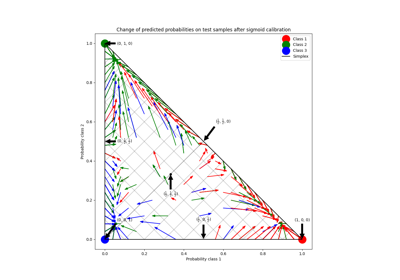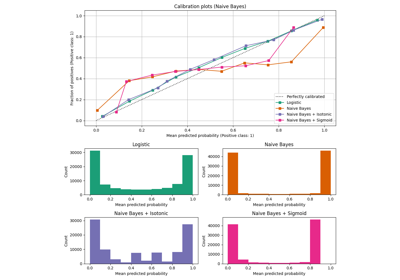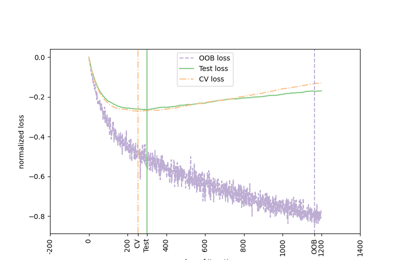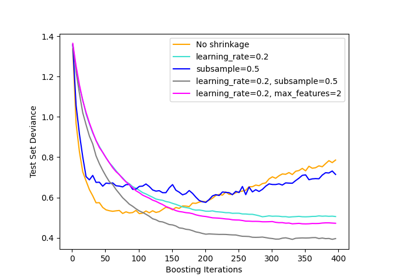sklearn.metrics.log_loss#
- sklearn.metrics.log_loss(y_true, y_pred, *, eps='auto', normalize=True, sample_weight=None, labels=None)[source]#
Log loss, aka logistic loss or cross-entropy loss.
This is the loss function used in (multinomial) logistic regression and extensions of it such as neural networks, defined as the negative log-likelihood of a logistic model that returns
y_predprobabilities for its training datay_true. The log loss is only defined for two or more labels. For a single sample with true label \(y \in \{0,1\}\) and a probability estimate \(p = \operatorname{Pr}(y = 1)\), the log loss is:\[L_{\log}(y, p) = -(y \log (p) + (1 - y) \log (1 - p))\]Read more in the User Guide.
- Parameters:
- y_truearray-like or label indicator matrix
Ground truth (correct) labels for n_samples samples.
- y_predarray-like of float, shape = (n_samples, n_classes) or (n_samples,)
Predicted probabilities, as returned by a classifier’s predict_proba method. If
y_pred.shape = (n_samples,)the probabilities provided are assumed to be that of the positive class. The labels iny_predare assumed to be ordered alphabetically, as done byLabelBinarizer.- epsfloat or “auto”, default=”auto”
Log loss is undefined for p=0 or p=1, so probabilities are clipped to
max(eps, min(1 - eps, p)). The default will depend on the data type ofy_predand is set tonp.finfo(y_pred.dtype).eps.New in version 1.2.
Changed in version 1.2: The default value changed from
1e-15to"auto"that is equivalent tonp.finfo(y_pred.dtype).eps.Deprecated since version 1.3:
epsis deprecated in 1.3 and will be removed in 1.5.- normalizebool, default=True
If true, return the mean loss per sample. Otherwise, return the sum of the per-sample losses.
- sample_weightarray-like of shape (n_samples,), default=None
Sample weights.
- labelsarray-like, default=None
If not provided, labels will be inferred from y_true. If
labelsisNoneandy_predhas shape (n_samples,) the labels are assumed to be binary and are inferred fromy_true.New in version 0.18.
- Returns:
- lossfloat
Log loss, aka logistic loss or cross-entropy loss.
Notes
The logarithm used is the natural logarithm (base-e).
References
C.M. Bishop (2006). Pattern Recognition and Machine Learning. Springer, p. 209.
Examples
>>> from sklearn.metrics import log_loss >>> log_loss(["spam", "ham", "ham", "spam"], ... [[.1, .9], [.9, .1], [.8, .2], [.35, .65]]) 0.21616...
Examples using sklearn.metrics.log_loss#

Probability Calibration for 3-class classification

Probabilistic predictions with Gaussian process classification (GPC)




